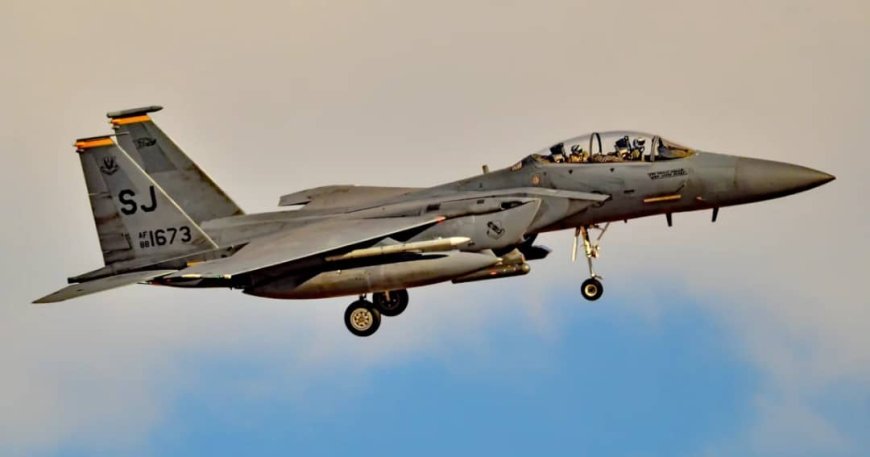India Develops Stealth Bomber with Global Strike Reach, Matching U.S. B-21 and Russia’s Tu-160
In a dramatic leap towards global strategic parity, India is quietly developing a new intercontinental stealth strategic bomber capable of striking targets over 12,000 kilometers away—a move set to transform the Indian Air Force, IAF, into a true global power projection force. Dubbed the “Ultra Long Range Strike Aircraft” or ULRSA, this next-generation bomber will represent a quantum shift in India’s military doctrine, expanding its strategic reach from a regional to an intercontinental scale.

In a dramatic leap towards global strategic parity, India is quietly developing a new intercontinental stealth strategic bomber capable of striking targets over 12,000 kilometers away—a move set to transform the Indian Air Force, IAF, into a true global power projection force.
Dubbed the “Ultra Long Range Strike Aircraft” or ULRSA, this next-generation bomber will represent a quantum shift in India’s military doctrine, expanding its strategic reach from a regional to an intercontinental scale.
First reported by The Economic Times, the ULRSA initiative is being pursued under a classified long-term program by the Ministry of Defence, MoD, to provide the IAF with deep-penetration capabilities, nuclear strike reach, and conventional bombing roles, matching the capabilities of the world’s foremost strategic bombers.
The planned ULRSA will draw heavily from proven platforms like Russia’s Tu-160 “White Swan” and America’s newly unveiled B-21 Raider, integrating stealth design, high subsonic speed, and massive payload capacity into a single potent platform.
By incorporating radar-absorbent materials, an internal weapons bay, and reduced heat and radar signature, the ULRSA is being designed to survive dense, layered air defence environments—such as China’s S-400 and HQ-9 networks.
The aircraft is expected to use a swing-wing geometry similar to the Tu-160 to balance aerodynamic efficiency during take-off and cruise with the speed and agility needed during penetration missions, providing better fuel economy and tactical versatility.
According to early design assessments, the ULRSA will carry a maximum payload of 12 tonnes, including four BrahMos-NG supersonic cruise missiles, advanced short-range ballistic missiles like the Agni-1P, precision-guided munitions, anti-radiation missiles, and gravity bombs—making it a dual-role strategic bomber capable of both nuclear and conventional warfare.
Tupolev Tu-160M
With its projected 12,000-kilometer combat radius, the bomber will enable New Delhi to conduct strikes deep into Europe, Africa, the Pacific, and the Arctic, enhancing deterrence not just against regional adversaries like China and Pakistan, but also against distant strategic threats.
This capability would place the IAF in an elite club alongside only a handful of global powers—namely the United States, Russia, and China—that maintain intercontinental-range bombers.
India’s Defence Research and Development Organisation, DRDO, is spearheading the feasibility studies, and the program has now moved into the conceptual and preliminary design phases, with an ambitious target of fielding a prototype by 2035.
“Modern warfare has moved beyond the constraints of geography,” a senior IAF official told domestic media, adding that, “We cover land and sea within the nuclear triad, but we need an air platform capable of carrying out strikes anywhere in the world.”
The same official noted that the growing strategic bomber capabilities of China—particularly the H-20 stealth bomber reportedly in advanced development—and the United States’ rapid deployment of the B-21 Raider, demand a corresponding Indian response.
The Ministry of Defence is reportedly engaging both Russia and France to facilitate technology transfer that could accelerate development timelines and offset technical challenges inherent to building a strategic bomber from scratch.
Russia, with its extensive experience in building the Tu-160—the world’s fastest and heaviest supersonic strategic bomber with a top speed of Mach 2.05, a range of 12,300 km, and a payload exceeding 40 tonnes—is seen as a key design and propulsion partner.
B-21 “Raider”
France, meanwhile, is being approached for contributions in avionics, stealth materials, and mission systems, leveraging their work on the Rafale and the future FCAS sixth-generation fighter program.
On the propulsion front, Indian aerospace engineers are currently evaluating two potential paths: adapting the Russian NK-32 afterburning turbojet used in the Tu-160, or modifying the U.S.-origin General Electric F414 turbofan engine for twin-use configuration with afterburner augmentation for long-range thrust.
Although the latter would require complex licensing and geopolitical alignment, India’s burgeoning defence relations with the U.S. under the iCET (Initiative on Critical and Emerging Technologies) framework may provide a potential opening.
The ULRSA will also incorporate India’s growing portfolio of indigenous weapons systems, including the BrahMos-NG—a lighter, stealthier variant of the original supersonic missile, with an expected range between 290 to 450 km and improved evasiveness against radar-guided defences.
The integration of BrahMos-NG with the bomber’s internal bay would give India the ability to conduct rapid, stealthy, deep-strike missions against high-value targets such as enemy command centers, naval strike groups, and hardened air defence nodes.
The inclusion of anti-radiation and guided munitions in the ULRSA’s payload mix would also enable it to perform Suppression of Enemy Air Defences, SEAD, missions, opening corridors for fighter ingress during wartime.
Moreover, the IAF envisions the bomber as a central node in India’s “nuclear triad,” delivering credible second-strike capability even if land- and sea-based assets are compromised.
In doing so, India aims to strengthen its Minimum Credible Deterrence posture under its No First Use policy, while increasing flexibility in deployment options and survivability of its strategic assets.
The entire initiative aligns closely with Prime Minister Narendra Modi’s “Aatmanirbhar Bharat” (Self-Reliant India) campaign, which seeks to reduce foreign dependency and make India a net exporter of defence technologies by 2047.
Strategic experts view the ULRSA as a vital counter to Beijing’s expanding power projection in the Indo-Pacific, particularly with the People’s Liberation Army Air Force’s (PLAAF) stealthy H-20 bomber expected to debut within this decade.
India’s ability to field a comparable platform will not only help balance the evolving aerial deterrence dynamics with China but also project Indian military influence as far as the South China Sea, Eastern Europe, and the Horn of Africa.
It would also allow India to participate in strategic bomber patrols alongside U.S. B-52s and B-1Bs or Russian Tu-95s in multilateral formats—signaling India’s arrival as a true 21st-century aerospace power.
The project’s roadmap, while ambitious, is tempered by realism: officials anticipate that the prototype may only be ready around 2035, given the complexity of airframe construction, propulsion integration, stealth shaping, and weapons alignment.
Still, Indian defence planners consider this timeline acceptable, given that the B-21 Raider took nearly 15 years from concept to rollout, and China’s H-20 remains in development for over a decade with no confirmed operational date.
If successful, the ULRSA program would be the largest aerospace project undertaken by India since the Advanced Medium Combat Aircraft, AMCA, and potentially the most consequential in terms of strategic impact.
At an estimated program cost that could exceed USD 5 billion (RM23.5 billion), the ULRSA may eventually form a squadron-sized fleet of a dozen or more bombers based at hardened airbases such as Panagarh or Thanjavur, with extended satellite command links.
In the long term, India’s ability to conduct intercontinental strikes could become a decisive factor in regional balance, especially amid increasing Chinese assertiveness in the Taiwan Strait, South China Sea, and Indian Ocean Region.
With Asia entering an era of stealth, speed, and strategic range, the ULRSA may well define the next epoch of Indian aerial warfare doctrine.
What's Your Reaction?



































































